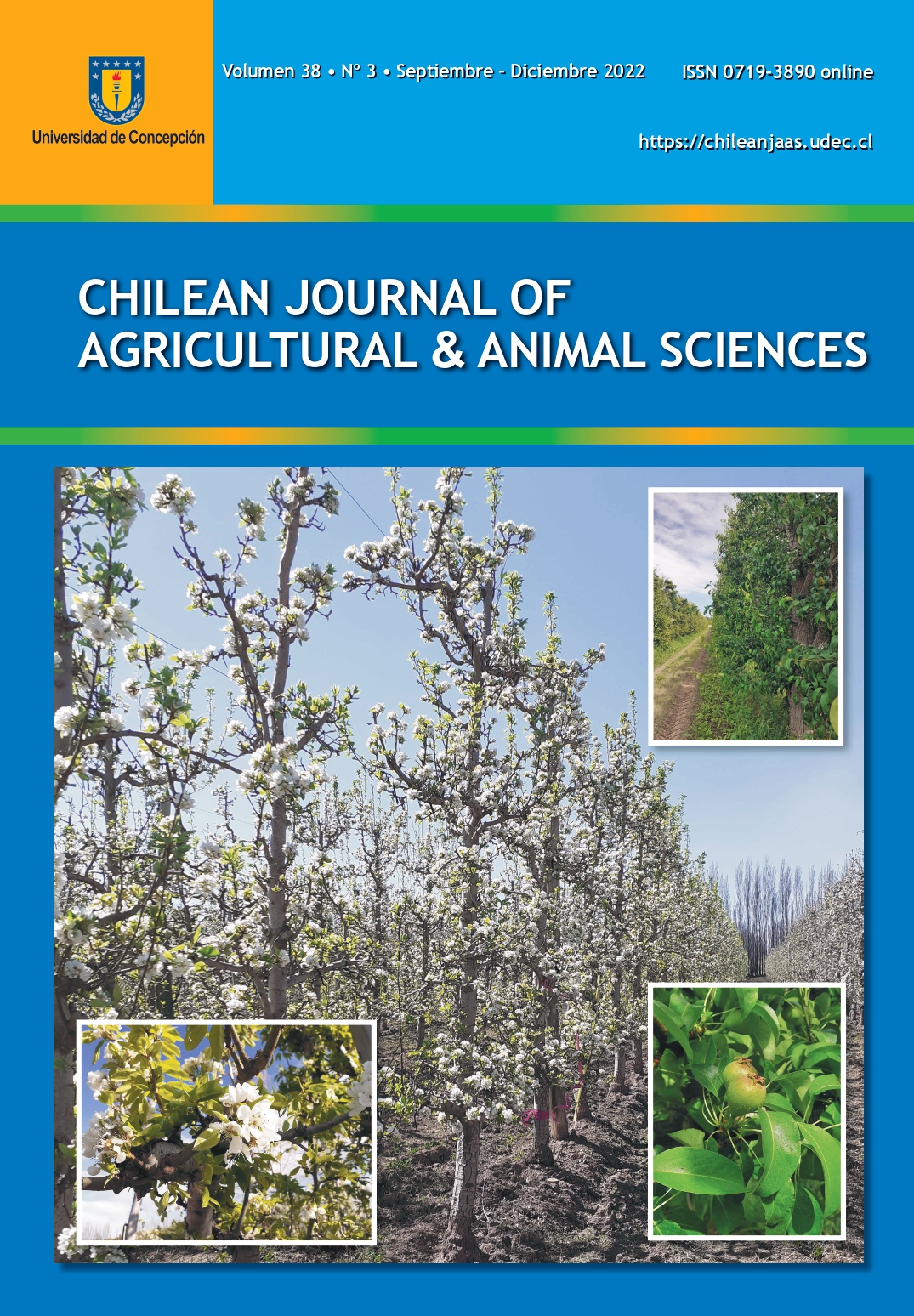BIOSTIMULATION IN COWPEA BEAN (Vigna unguiculata L. WALP) AS AN ALTERNATIVE TO SYNTHETIC CHEMICAL FERTILIZERS IN MANABÍ, ECUADOR
DOI:
https://doi.org/10.29393/CHJAA38-28UFEC10028Abstract
Cowpea bean (Vigna unguiculata L. Walp) is a nutrient-rich crop that can be produced in dry periods. As an alternative to synthetic chemical fertilization (SCF) in this species, the effects of a biostimulant (bovine manure vermicompost leachate, BMVL) on growth and yield variables were studied. The research was carried out at the Las Maravillas site, Rocafuerte canton, province of Manabí, Ecuador. Foliar application of four dilutions of BMVL (1:10, 1:20, 1:30 and 1:40 v/v) were made at 10, 20, 30 and 40 days after sowing. Two control treatments, one with SCF (NPK 15-15-15), and the other without fertilization or biostimulant (absolute control) were included. Biostimulation with BMVL significantly increased plant length with respect to both controls. Grain weight and estimated yield had higher values in the plants that received biostimulants compared to the absolute control. However, values were lower than those in the control with SCF, which may indicate that the use of biostimulants cannot fully replace the contribution of nutrients by SCF. The estimated yields in the dilutions of BMVL 1:10, 1:30 and 1:40 v/v, which reached values between 89 and 94% of those obtained with SCF, show that BMVL can be used as an alternative to SCF to achieve reasonable production levels at low economic and environmental cost in the cultivation of cowpea bean.
Downloads
Published
How to Cite
Issue
Section
Copyright (c) 2022 Eduardo Fidel Héctor Ardisana, Antonio Torres García, Jorge Leonardo Paguay Macías

This work is licensed under a Creative Commons Attribution 4.0 International License.







